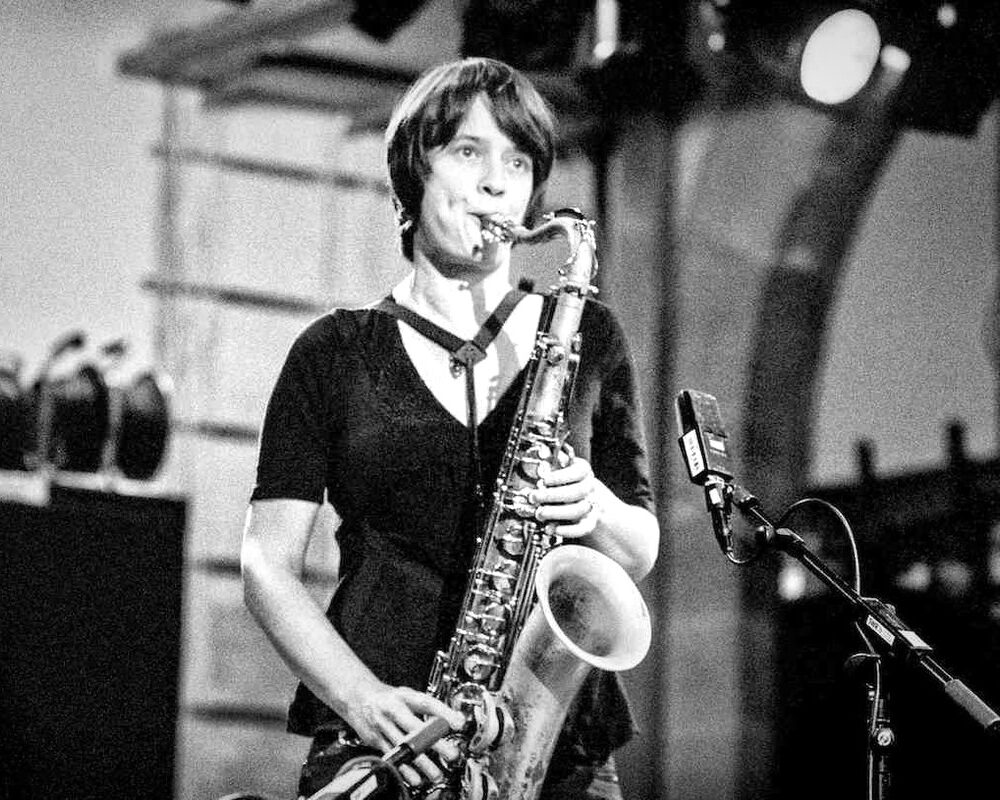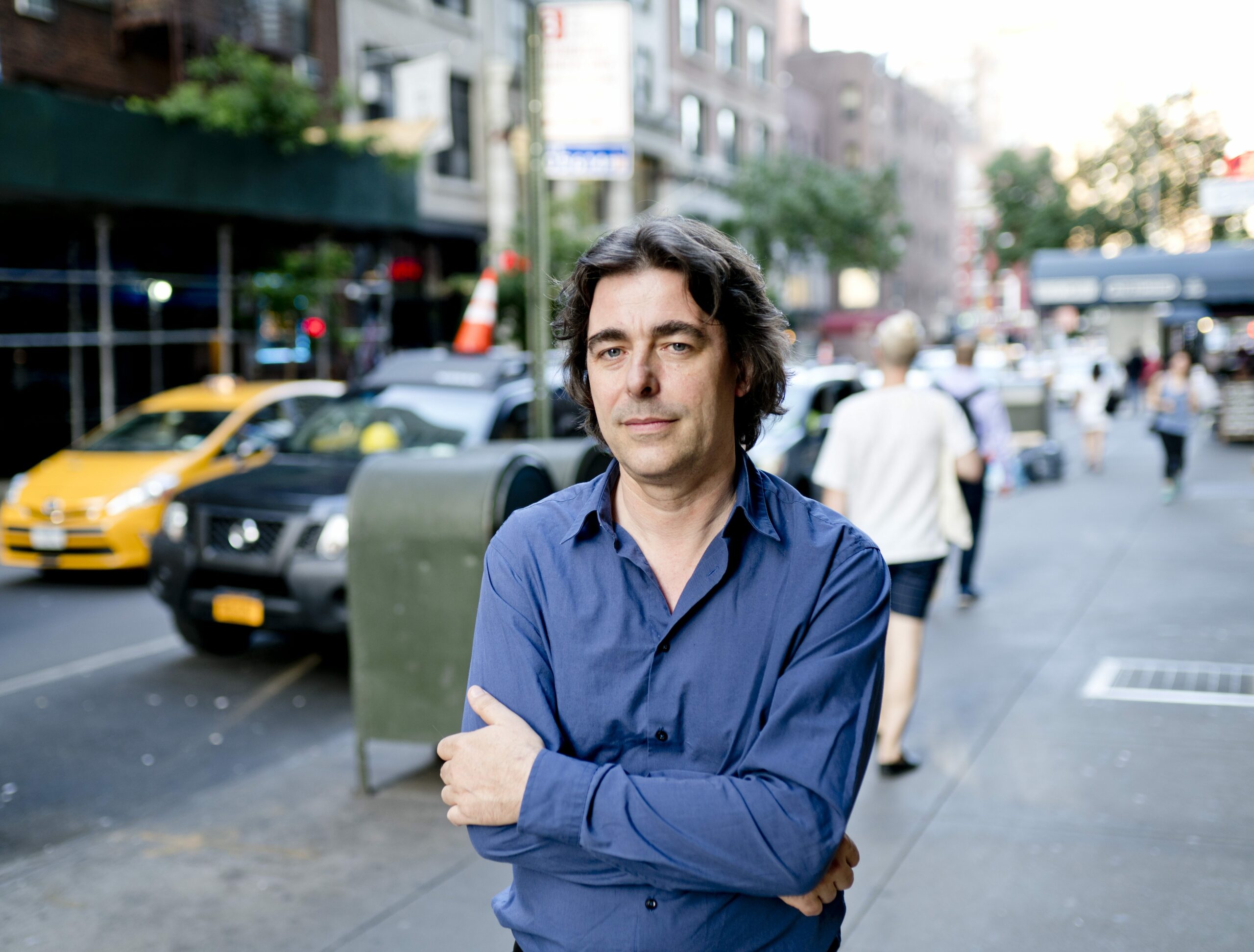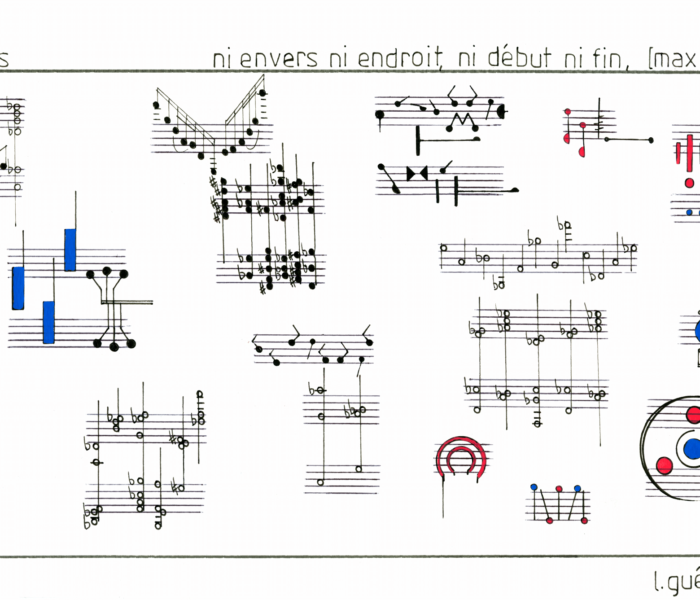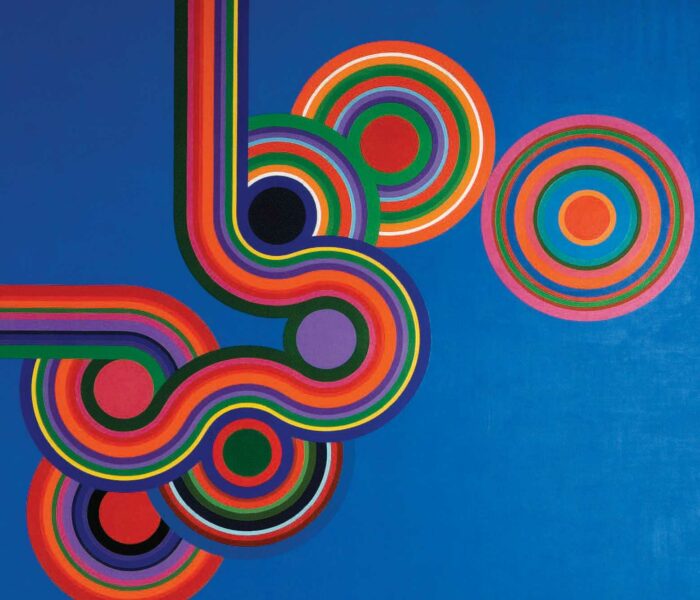L’improvisation demeure un facteur fascinant des musiques du champ jazzistique. Pour autant, la valeur du jazz ne peut être réduite à cette pratique. D’autant que ses musiciens s’ingénient souvent à flouter les contours entre le fixé et le non-fixé. Il semble bien que les acteurs jazz du XXIe siècle aient accusé cette ambiguïté, (se) jouant (de) avec la perception des auditeurs. Bref état des lieux.
…avant le XXIe siècle ?
Fixé (plutôt que « écrit »), non-fixé (plutôt que « improvisation »).
Depuis les débuts de l’histoire du jazz, ce rapport à la musique n’a cessé de tarauder auditeurs, musiciens, analystes du jazz. On ne compte plus les ouvrages sur l’improvisation. Cependant, il existe de longue date une tradition du solo préparé, un morceau de musique fixé dans l’esprit du musicien auquel ce dernier donne vie moins en interprète (un interprète se place souvent comme intermédiaire entre un compositeur et l’auditeur) qu’en créateur.
L’un des solos ayant changé le cours de l’histoire du jazz relève de cette nature : le “West End Blues” que Louis Armstrong enregistra avec ses Hot Five en 1928. Des années plus tard, quelques musiciens mis à part et une fois des recherches effectuées, on finissait par comprendre qu’il s’agissait d’un moment fixé en amont de l’exécution, du moins peaufiné performance après performance et gravé dans le marbre ce 27 juin.
De même, c’est seulement à la parution des alternate takes de « Night in Tunisia » enregistré par Charlie Parker le 28 mars 1946 que l’on découvrit que son fameux break en ouverture de solo était loin d’avoir été improvisé dans l’instant. Il en fut de même, mais à un niveau différent, avec la fameuse version du 5 mai 1959 de « Giant Steps » par John Coltrane, dont la publication des prises non retenues parues en 1995 révélait ce que Philippe Michel, après une étude détaillée des onze solos réalisés par le saxophoniste, master take comprise, résume ainsi : « [“Giant Steps” représente] un projet qui englobe à la fois un pré-texte relativement fixe (le thème de “Giant Steps”) et un réseau de pré-textes alimentant la phase d’improvisation. La liberté du soliste est acquise ici non par l’adaptation d’un vocabulaire formulaire préexistante au cadre harmonique, mais bien par la coïncidence de pensée qui génère et le cadre et le vocabulaire formulaire prévu pour exploiter ce cadre au sein du solo [2] […]. »
À partir des années 1960, et déjà chez certains musiciens des deux décennies précédentes, nombre d’entre eux issus du champ jazzistique ont continué de brouiller les frontières entre fixé et non-fixé. Œuvre ouverte, aléatoire, partition graphique, programme électronique et bien d’autres stratégies et méthodes ont été développées, les musiciens issus du champ jazzistique n’hésitant pas à emboiter le pas aux compositeurs de la musique dite alors « contemporaine ». En apparence, les mouvements d’Anthony Braxton, George Lewis, Jean-Louis Chautemps et autres Michael Mantler semblaient être opposés à ceux de Karlheinz Stockhausen, Krzysztof Penderecki et John Cage : quand les compositeurs tentaient par l’écrit un retour vers le geste[3],, les jazzmen, eux, semblaient partir de l’écrit pour motiver leur improvisation. En réalité, le champ magnétique entre les deux mondes bougeait beaucoup au point de souvent s’aimanter[4].
…au XXIe siècle ?
Les voies ouvertes par les protagonistes du champ jazzistique des soixante dernières années continuent de nourrir les pratiques de nos contemporains. Ceux-ci les ont toutefois modifiées, raffinées, développées, augmentées, en se concentrant encore davantage sur leur aspect perceptif. Depuis l’avènement d’internet et son foisonnement corollaire dont il paraît impossible d’appréhender la totalité, bien difficile de dresser une carte complète des tendances, éventuelles écoles et regroupements divers à l’œuvre dans le champ jazzistique d’aujourd’hui (d’autant plus dans le cadre restreint d’un tel écrit). Aussi, afin de donner quelques idées des mille et une manières actuelles d’envisager le rapport entre fixé et non-fixé, examinons ici la manière dont Stéphane Payen, John Zorn et Matt Mitchell jouent avec la perception de l’auditeur, trois exemples représentatifs du kaléidoscope contemporain.
a) Stéphane Payen[5] et l’oscillation
En 2020, les saxophonistes Ingrid Laubrock et Stéphane Payen faisaient paraître All Set[6], un album en quartette dont la musique était conçue depuis la composition sérielle pour piano et petit ensemble de jazz éponyme de Milton Babbitt, créée en 1957 par Bill Evans au piano. Les deux protagonistes principaux s’étaient imposés comme contrainte de composer chacun quatre pièces à partir des quatre séries dodécaphoniques fondant la pièce du compositeur étatsunien. Pour concevoir sa musique, Payen explique : « J’ai choisi de ne quasiment pas créer de forme pour l’improvisation ; je voulais quelque chose de très libre. J’avais envie de manipuler les couleurs des séries, y compris pendant l’improvisation. Mes parties écrites ont donc été pensées comme des ponts vers l’improvisation. »
Celles de « Harmonization » sont extrêmement structurées : la série est accompagnée par des notes dont les intervalles vont en s’agrandissant, tout comme les rythmes (5 doubles croches, puis 5+1, puis 5+2, etc.), et les harmonies sont conçues en alternant l’ordre des notes constitutives d’accords à trois sons. « Harmonization » comprend quatre parties (dont l’ordre de succession peut être modifié chaque soir) pour autant de variations composées depuis l’une des quatre séries de Babbitt. Chaque variation est suivie d’une improvisation d’une nature difficile à déterminer. Ni absolument « libre » bien que l’esprit en relève, ni vraiment contrôlée ou dirigée, elle possède un agent actif en la personne de Payen, qui précise : « En tant que compositeur, je me positionne comme un paramètre de variabilité, en fonction de ce que joue Ingrid, par exemple. Qu’elle reste proche de la série ou s’en éloigne, j’ai deux choix : soit j’abandonne moi aussi totalement la série, soit au contraire je vais strictement coller à la suite de notes initiale pour garder un lien entre ce qui a précédemment été entendu, la partie écrite, et l’improvisation, posant de la sorte un habillage à ce que ma partenaire propose. » Conséquence : la contrainte souple dont s’empare l’improvisateur entraîne un aller-retour incessant entre le fixé et le non-fixé qui emmène l’auditeur non-expert (soit la majorité) à ne pas vraiment saisir que la musique oscille souvent entre ces deux états.
b) John Zorn et le double état
Entre 2010 et 2014, John Zorn a entrepris de concevoir de la « musique pour trio avec piano qui pourrait être jouée en club aussi bien que sur des scènes de festival de jazz européennes », comme il l’écrit pour le livret de l’album In Hall of Mirrors[7]. Pour ce projet, il conçoit des parties très virtuoses totalement fixes pour le piano et totalement improvisées par le contrebassiste Greg Cohen et le batteur Tyshawn Sorey. Les six pièces présentent ainsi quelques-uns des équilibres possibles, toujours différents, entre fixé et non-fixé. En son début, « In Lovely Blueness » s’apparente par exemple à une ballade jazz, plutôt ouverte car zébrée de traits atonals. Plus la musique progresse, plus l’alternance entre ces deux dimensions s’intensifie, ce qui réclame une grande souplesse de la part des accompagnateurs. Toutefois, ceux-ci ne découvrent pas les événements sonores au fur et à mesure de leur arrivée. En amont, ils ont eu accès à la partition et connaissent donc à l’avance la trame de la pièce. Le tandem rythmique s’y situe dès lors à la jonction de deux états, ou plutôt dans un double état : autant interprète qu’improvisateur. Ceci entraîne un trouble à l’audition que Zorn, pour le citer de nouveau, souligne bien : « Parfois cela sonne comme si en réalité c’est le piano qui les suit, eux. »
c) Matt Mitchell : l’oscillation et le double état
Le disque Fiction[8] (2013), que le pianiste Matt Mitchell a enregistré en duo avec le batteur Ches Smith, s’apparente à un recueil d’études des allers et retours et de la co-présence du fixé et du non-fixé. L’intégralité des quinze plages de l’album repose sur un principe identique : une partition dont seule la partie de piano est écrite. À la différence de Zorn, l’auditeur n’est en revanche pas informé. À l’audition, on saisit toutefois que toutes les pièces débutent par des moments fixés en amont de la performance, en particulier parce qu’ils sont répétés en boucle un certain temps. Tout l’enjeu, et de la sorte toute l’ambiguïté, consiste pour le pianiste à s’éloigner plus ou moins progressivement ou non de sa partition. Et les solutions sont multiples. Au troisième tour de « Brain Color », Mitchell conserve à l’identique sa main gauche, tandis qu’à la droite il modifie les hauteurs tout en conservant les figures rythmiques initiales ; au tour suivant, elle s’éloigne peu à peu des rythmes imposés ; pendant le cinquième tour, sa main gauche dessine des lignes mélodiques inédites, les deux conservant l’homorythmie du début ; et ainsi de suite jusqu’à dissolution des éléments fixés, avant leur retour. Tout ceci pendant que le batteur, lui, ne cesse d’improviser. Pour « Diction », Mitchell procède autrement. Partition écrite à deux voix réelles, il fait exécuter la partie supérieure par Smith au vibraphone et sa main droite. À la troisième réitération, celle-ci improvise des hauteurs plus ou moins en homorythmie complète avec la main gauche, laissant la voix du haut au seul vibraphone. Pour le cycle suivant, le vibraphone maintient la partie fixée tandis que le piano semble gommer des éléments de sa partie, entrant et sortant de la partition qu’il respecte plus ou moins. Smith s’installe ensuite derrière sa batterie tandis que le pianiste s’inspire de sa partition sans la jouer strictement. Plus on avance dans la plage, plus l’ensemble se libère de la partition, qui reste cependant en arrière-plan des inventions du duo. Mais tout ceci, l’auditeur ne le sait pas. Il se pose donc sans cesse la question de savoir ce qui est improvisé de ce qui est fixé, rendu d’autant plus dubitatif que les éléments musicaux notés, par leur difficulté et leur langage éloigné de toute référence à la mélodie accompagnée, participent à la création d’une sensation d’ambiguïté.
À l’issue de notre rapide survol, l’assertion que Denis Levaillant – auteur d’un ouvrage de référence sur l’improvisation[9] – avançait à la fin du XXe siècle semble toujours d’actualité : sont dans l’erreur ceux qui opposent le noté à l’impromptu, car « l’improvisation n’a pas créé de “langage”, […] cette idée est trompeuse, comme si nous avions en face de la “musique écrite” une “musique improvisée” qui serait une catégorie esthétique à part[10]. » Au XXIe siècle le plus important pour les praticiens du champ jazzistique demeure moins l’interrogation des différences de natures entre le fixé et le non-fixé que l’approfondissement et le raffinement des jeux possibles avec la perception du phénomène sonore. C’est ainsi que Greg Cohen, commentant les pièces de Zorn, considère qu’elles annoncent le « futur du jazz[11] ». Les musiques enregistrées par Stéphane Payen, John Zorn et Matt Mitchell semblent lui donner raison, début de liste à laquelle il convient d’ajouter les noms de Craig Taborn, Kris Davis, Anna Webber, Marc Ducret, Julien Pontvianne, Tyshawn Sorey, Bo van der Werf, Luiza von Wyl, Sylvaine Hélary, Tim Berne, Adrien Sanchez…(prière de compléter la liste !).
Ludovic Florin
[1] Ce qui est le cas pour Charlie Parker comme l’a montré Thomas Owens dans sa thèse fameuse : Charlie Parker, technique of improvisation, University of California (Los Angeles), 1974.
[2] Philippe Michel, « “Giant Steps”, la liberté gagnée sur / par la contrainte », dans Vincent Cotro (dir.), John Coltrane. L’œuvre et son empreinte, Paris, Éditions Outre Mesure, coll. « Contrepoints », 2011, p. 105.
[3] Sur ce sujet, se référer à la théorie des musiques audiotactiles de Vincenzo Caporaletti.[3
[4] Sur ce sujet, voir Ludovic Florin, « “Jazz(s)” et “musique(s) contemporaine(s)” : le continent négligé. Une brève histoire de relations », dans Philippe Carles, Alexandre Pierrepont (dir.), Polyfree. La jazzosphère, et ailleurs (1970-2015), Paris, Éditions Outre Mesure, 2016, p. 47-58.
[5] Les informations sur la pièce de Stéphane Payen proviennent d’un entretien personnel avec le musicien du 10 septembre 2021.
[6] Stéphane Payen, Ingrid Laubrock, Chris Tordini, Tom Rainey, All Set, enregistré le 12 et 13 mai 2019, Studio La Buissonne, Pernes-les-Fontaines, RogueArt, ROG-0105.
[7] John Zorn, In the Hall of Mirrors – featuring the Stephen Gasling Trio, enregistré le 26 février 2014 à Oktaven, Mount Vermon, Tzadik, TZ 8317.
[8] Matt Mitchell, Fiction, enregistré le 17 et 18 décembre 2021 à The Loove, Brooklyn, Pi Recordings, PI50.
[9] Denis Levaillant, L’improvisation musicale, Arles, Acte Sud, 1996.
[10] Denis Levaillant, « En lisant, en jouant, en écrivant », dans Filigrane, n° 8, « Jazz, musiques improvisées et écritures contemporaines » (Pierre Michel, dir.), Sampzon, Éditions Delatour France, 2008, p. 23.
[11] Voir notes de pochette de l’album de John Zorn In the Hall of Mirrors (op. cit.).



)



